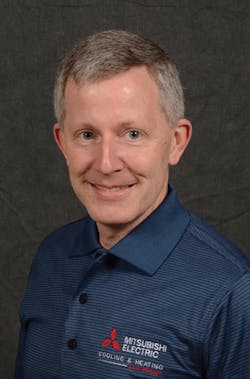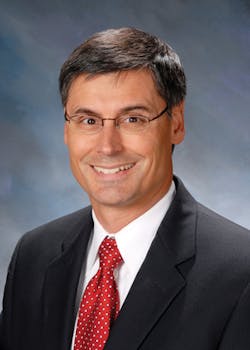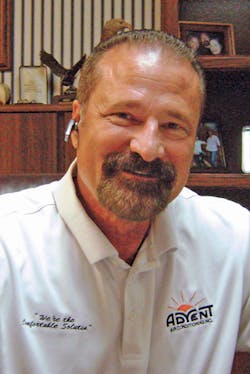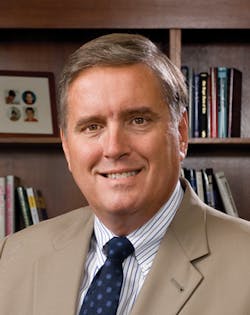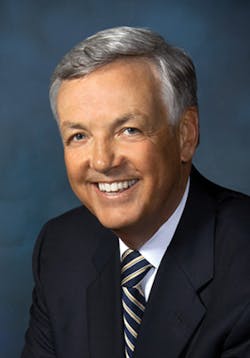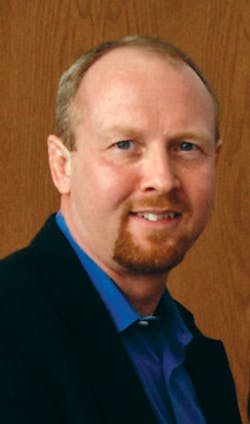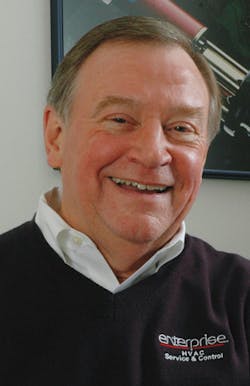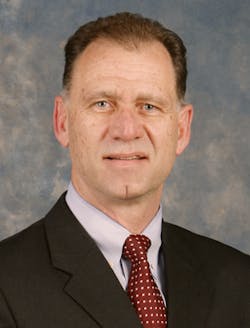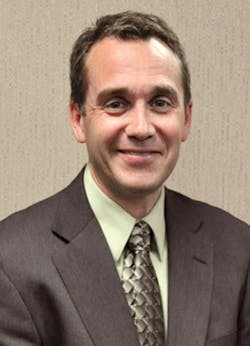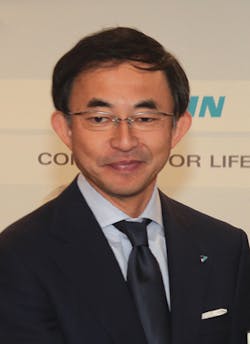2014 HVAC Industry Executive Roundtable
Contracting Business.com’s annual conversation with HVAC industry leaders produced interesting feedback on the state of the industry, during another year of legislative changes, technological advances, manpower shortages, and a slow, but steadily growing economy. Here is a recap of the top executives answers to six industrywide issues.
This year's panel consited of the following executives:
- Gary Bedard, vice president and general manager, Lennox Residential
- Mike Branson, vice president and general manager, Rheem Air Conditioning Division
- Ebisu Takeshi, CEO, Daikin Applied
- John Galyen, president, Danfoss North America
- Timothy Smerz, president, Air Comfort, Inc., Contracting Business.com’s 2014 Commercial Contractor of the Year
- Mike Douglas, president and owner, Advent Air Conditioning, Contracting Business.com’s 2014 Residential Contractor of the Year
- Tom Huntington, president / CEO, WaterFurnace International, Inc.
- Mark Kuntz, vice president, marketing and engineered solutions, Mitsubishi Electric
- Cooling & Heating
- Rich Mathews, senior vice president, marketing, Tools Business Segment, hilmor
- Ed Purvis, executive vice president, Emerson Climate Technologies
- Paul Stalknecht, President/CEO, Air Conditioning Contractors of America (ACCA)
- Richard A. Starr, Chairman, Mechanical Service Contractors of America, and president, The Enterprise Corporation, Twinsburg, OH, AND Contracting Business.com's 2011 Commercial Contractor of the Year.
What legislative issues do you see having the greatest impact - positive or negative - in the HVACR industry in the next 1 to 2 years?
Legislatively, we don’t see very much happening. We haven’t had an energy bill passed in seven years, and after what happened in May with the Shaheen-Portman Energy Efficiency Bill (bit.ly/EE-Priorities), we don’t really expect much legislation on a federal level. But, we do see a lot happening on the regulatory front, which is a close cousin to it.
On the positive side, I think there was a great resolution to the regional standards questions that had come up, and the fact that there’s now an 18-month grace period to transition into the new regional energy standards is a positive.
On the negative side, we’re seeing the Department of Energy pushing into greater detail in terms of how our industry’s equipment is rated and the efficiency levels it’s required to achieve. We support that at the system level, but we see the Department of Energy delving down to the component level, and as you look at very complex systems like VRF or ductless systems, it has to be optimized across all the components.
Clearly, the enforcement mechanisms for regional efficiency standards will have a profound impact upon contractors, distributors, and manufacturers. The standards need to balance enforcement such that law-abiding companies are protected from those that might be tempted by non-compliance, while avoiding burdensome costs which hurt everyone.
Another key issue in the coming years is the EPA 2015-2019 HCFC (R-22) allocation rule, which has yet to be published. The allocation rule will significantly influence the economics for dry-charge equipment by essentially driving the market price of R-22.
As building codes tighten and become more involved, it will force companies out of business that don’t continue to train and keep up with all changes. This is both good and bad. Good, because it will force a lot of fly-by-night, low quality companies out of business. Bad, because it will make business increasingly more complex and expensive. One thing that can have a very negative effect on our industry are EPA and other government regulations, that do not have any concerns for business or cost.
We must recognize that higher efficiency and more environmentally-friendly products come with a cost. Many of our markets have seen a significant change in equipment cost — and therefore price — over the past 20 years as regulations have increased. I have no doubt that this has had a negative effect on our market demand. This is something we need to consider carefully as governments continue to regulate more efficient and more expensive equipment in the future.
Going forward, we very much want to work with the government to find solutions to deal with the need for environmentally friendly equipment, but we feel it must be collaborative to avoid having excessive regulation damage our industry.
The largest challenge is that we don’t have a policy that everyone understands — from the top, down. Most homeowners understand that when they move from coal to natural gas, it’s a dramatic step forward in clean energy. They don’t, however, understand that it doesn’t stop there. There’s one more huge step they can take to become more energy efficient, and that’s installing geothermal technology.
(The editors of ContractingBusiness.com see that, as coal-generated electricity supply is reduced, the cost of electricity will rise, and “brown-outs” may become more frequent. Continued implementation of high-efficiency equipment is the best option to prepare for these possibilities.)
With a gridlocked congress, you can’t expect to see too many legislative challenges, even after the mid-term elections later this year. The 2015-2016 Congressional session will be conducted with a focus on the pending presidential election. So things won’t change much. But, the industry is hoping Congress will renew a number of expired tax breaks that encourage homeowners and building owners to buy new HVAC equipment before the end of this year. And, we hope that Congress can extend the small business investment breaks that help contractors purchase new vehicles, computers, and other improvements.
From a business perspective, some kind of pension reform is needed, which could remove a significant destabilizer in our economy. The unfunded liabilities in our industry present not only a significant risk to contractors, but undermine confidence in our economic system.
I think a smart, well defined energy strategy would also have a positive impact on the economy overall, and could clarify strategies for contractors.
The labor force demographic is a challenging issue. We can’t cut our way to prosperity. Raising standards, performance and competitiveness is the way to go. Similarly, our health plans are hard hit by the sometimes hasty and haphazard implementation of Obamacare. We badly need technical corrections in that program to shore up our plans, and make sure the free riders in the industry get the right incentives they need to pay their fair share. Going further, our apprenticeship and training system will need to continue to adapt and change, to address the rapidly changing labor force demographics that we’ll have to deal with going forward. Likewise, immigration reform needs to be addressed in a way that doesn’t damage the high workforce standards in our industry.
How acute is the technician shortage in the HVACR Industry and what is your company doing about it?
The survey revealed that most business owners either bought into or inherited a family business, or started their own company after being a technician. It also showed that about 65% of those responding to the survey only had a high school, trade/vocational school, or associate degree. ACCA is using this information to show the public, government officials, and schools that a four-year college degree is not the only avenue to being successful, and that the trades are a great way to earn a good living.
Danfoss is investing in several key activities to help overcome this challenge. First, we’re convening a symposium on this topic later in the year that will bring together stakeholders to address workable solutions to this problem. Second, we’re making heavy investments in a training program, technical school support, and tools for the millennial generation to help attract, train and retain skilled contractors.
: Manufacturers can help advance the industry and attract new technicians by integrating new technology into HVAC products that allows contractors to improve their effectiveness on the jobsite. Rheem is working to include all-new features that will assist service technicians in properly installing and servicing Rheem heating, cooling and water heating systems.
(ContractingBusiness.com believes in the importance of an improved career marketing effort by the HVAC industry to the world. In addition, high school administrators and others must start promoting HVAC as a viable career path for some students.)
I don’t believe there is a notable technician shortage. But, as the Baby Boomers and Generation X people begin to retire, there’s a threat that a scarcity of skilled and trained technicians will start to overwhelm the industry. This is true across most skilled trades. To encourage men and women to explore a career as an HVAC technician, hilmor is helping them get started on the right foot with the “Retool Your Future” scholarship program (retoolyourfuture.com).
As a manufacturer, we provide products and systems to vocational schools, since this is a major provider of qualified technicians. We also fully support NATE with its goal of generating qualified HVAC technicians.
What other challenges /opportunities do you see for the HVACR Industry in the next two to five years?
On top of this, controls and the proliferation of smart phones are both exciting developments to help us satisfy the growing needs of consumers and to help contractors run their operations more efficiently.
Ductless products represent a fast growing segment of the HVAC business. We urge contractors to make certain that they are aware of the trend and that they have the knowledge and skill sets required to take advantage of it.
Inverter technology is becoming more prevalent in the industry, too. Again, contractors need to know how best to present its best benefits to their customers.
- Potential positive impact of improved controls/connectivity on the marketplace. Adoption is slow, but we feel it will accelerate in the near term.
- The importance of modulation, including, but not limited to variable-speed technology, to provide meaningful solutions for efficiency and comfort in many of our markets.
- The need to continue to develop new technologies that provide more efficient and cost-effective options that will be demanded in the future.
- The need to resolve the complicated global challenge of selecting the right refrigerants for the right application, and the development of cost-effective, sustainable solutions
A major challenge we face is the increasing number of competitors from other trades who are entering the market because the HVAC industry is a lucrative and growing field.
At a broader level, there are opportunities to advance energy efficiency through whole-building system performance, smart equipment linked to a smarter grid, and on-going peak energy demand reduction and management where variable capacity technology will have a leading role.
Do you see renewable technologies having a bigger role in the HVACR industry in the next five years?
As with all technology, the price of solar and wind will decrease, and more will start asking for it. When that happens, our industry is the right industry to take this on, because we’re already in consumers’ homes and businesses.
One example that illustrates the effect of this technology in the marketplace is California’s most recent revisions to Title 24, which addresses Zero Net Energy (i.e. onsite solar, wind, etc. must be used to generate energy for the building, thereby contributing to zero net energy).
Longer term, there are interesting potential technologies that could be even more disruptive on the renewable front. These could include applications like combined heating, cooling and power systems, potentially including fuel cell technology. However, while being selectively applied in some markets, they are not yet practical on a large scale today.
Why don’t most manufacturers enforce their maintenance requirements in their new equipment warranties? If the reason is that the language is unenforceable, why have it at all?
The unknown question for manufacturers is, if they were to impose (and enforce) tighter installation and maintenance standards, would the “good” contractors follow suit and purchase their equipment? If they don’t tighten up their policies, how will they be able to control warranty costs and raise the professional bar in the HVACR contracting industry?
We still have language in place that gives the homeowner or consumer every incentive to do proper maintenance on the system, have it installed by a properly trained technician, and do the things that we know are going to result in a good outcome. Even if, at the end of the day, we honor a warranty that hadn’t dotted all the I’s and crossed all the T’s, there’s still a good benefit to having firm language in place.

